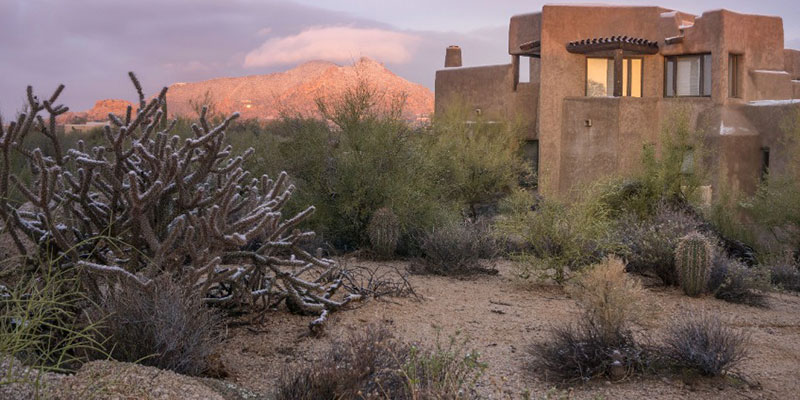In order to conserve water, many municipalities in the West are encouraging the replacement of lawns with xeriscaping, that is landscaping with native, drought-tolerant plants.
As water becomes scarcer, solutions like water reuse and desalination are becoming more relevant
In the western United States, feats of civil engineering in the 20th century diverted river flows and snowmelt to make life in many naturally arid areas more inviting. Lush lawns and vegetation began to flourish in desert cities. Populations grew with the newly attractive real estate and kept growing. Now it seems that water demand and climate-change-associated drought have caught up, and unprecedented water conservation measures are being rolled out.
Water levels in Lake Mead, which supplies 90% of Las Vegas’ drinking water, are at their lowest since the Hoover Dam was built to create the reservoir in the 1930s. Hydropower generation at the dam has dropped, and the water-level “bathtub rings” hundreds of feet up the canyon walls are stark reminders of the drought.
Although treated wastewater from Las Vegas is returned to the lake for reuse, much of it is lost to evaporation on the way and levels continue to drop. The original water intake for Las Vegas is now high and dry, but a deeper, $1.5 billion intake project is pumping more water to southern Nevada from the disappearing lake.
In response, Las Vegas has passed an ordinance that will lower its water use by up to 10%: It has banned lawns. Around homes and condos and along streets, sod cutters are removing all grass that is considered nonfunctional under the ordinance. It will be replaced with plants that are more tolerant of desert conditions.
Los Angeles Trims Watering
Meanwhile, as California enters its third year of extreme drought, Los Angeles is also cutting back on grass. Some 4 million residents are permitted to water their lawns only twice a week, for eight minutes at a time, and not in the middle of the day. Washing driveways, sidewalks, and cars without a self-closing hose can result in a $600 fine.
Residents of some surrounding communities have no groundwater to fall back on during droughts, yet many residents run sprinklers in the middle of the day. Officials have put 600 households on notice for exceeding water budgets. Fines are issued, but many wealthy residents who can afford to pay them continue the habit anyway. In response, the local water agency has begun to choke off the supply of water to the homes of serial wasters.
Finding Alternative Water Supplies
Treatment and reuse of wastewater is one of the most efficient ways to increase the amount of water for nonpotable applications like landscape watering and car washing.
Large cities like Las Vegas and Los Angeles, with its Operation Next wastewater recycling plan, are invested in water reuse, but many small areas throughout the West may not have access to a plant that can treat sewage properly for reuse. Even with such access, a return pipeline for nonpotable effluent may prove too costly.
Another option is desalination of the West’s plentiful brackish groundwater In the U.S. aquifers, there’s 800 times more brackish groundwater than fresh, and brackish water can be desalinated much more affordably than seawater. One researcher envisions small, decentralized desalination plants dotted across the West.
Fluence is committed to providing solutions to these water supply problems. We offer modular Aspiral™ wastewater units and NIROBOX™ desalination units that are containerized and ready to serve in the West, with globally validated technologies. Contact our experts to explore the benefits of decentralized water infrastructure and the flexible financing that can make it happen.

